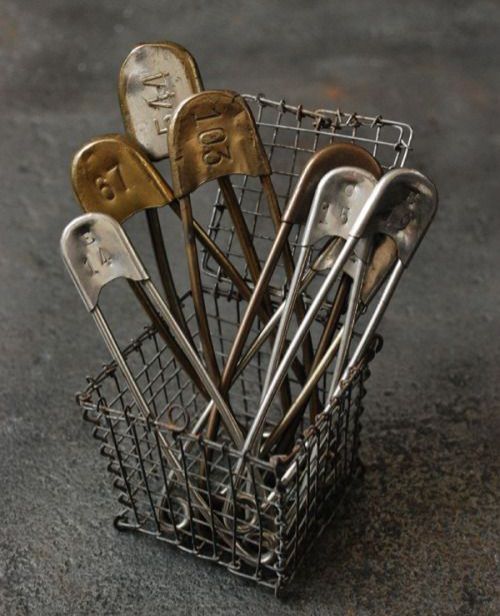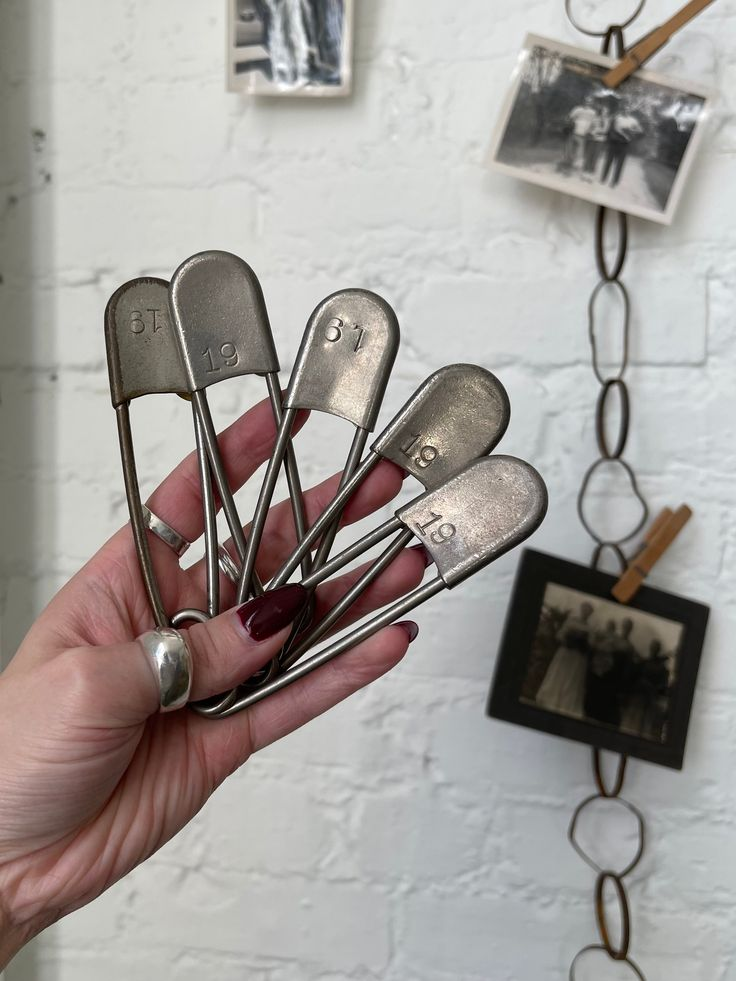First Impressions Can Be Deceiving
At first glance, these objects may look like oversized safety pins, the kind you’d expect to find in a tailor’s kit or a quirky vintage shop. Yet, their purpose was far more practical—and surprisingly essential—in the days before washing machines dominated every home. These heavy-duty metal tools, stamped with bold numbers, were once the unsung heroes of the laundry industry.

The Golden Age of Laundry Pins
From the 1930s through the 1950s, giant laundry pins—or laundry markers—were a common sight in industrial laundries, hotels, hospitals, and even military facilities. In a time when thousands of garments needed to be cleaned and returned without error, these sturdy markers offered a foolproof system.
How Laundry Pins Worked
Each pin carried a unique number. Workers would attach the pin to a bundle of clothing before it entered the wash. That number matched a corresponding slip, tag, or basket belonging to the customer. After washing and pressing, the garments could be returned to their rightful owner quickly and efficiently.
It was a simple yet brilliant solution. Imagine managing piles of uniforms from hundreds of soldiers or linen from a bustling hotel without mixing them up—these pins made the impossible, possible.
Video : Century’s Laundry Marker Pen
A System Built on Numbers
The numbers etched into each pin weren’t random. They served as the anchor in a paper-trail system long before digital barcodes and QR codes existed. If you lost your laundry slip, the number on the pin was the key to reconnecting garments with their owner. In many ways, these laundry pins were the original “tracking devices” of the textile world.
Why They Disappeared
As technology advanced, the humble laundry pin began to fade away. The rise of small household washing machines reduced reliance on large industrial laundries. Later, computerized tracking systems, fabric-safe tags, and barcoding replaced the need for heavy metal markers. By the 1970s, laundry pins had almost vanished from everyday use, lingering only in specialized facilities.

Collectible Relics of Nostalgia
Today, these pins live on as nostalgic artifacts. Vintage enthusiasts, collectors, and history buffs hunt for them in antique shops, flea markets, and online auctions. Their industrial aesthetic makes them appealing as decorative pieces—some people repurpose them as quirky paperweights, keychains, or even wall art.
Beyond their charm, they serve as conversation starters, reminding us of a time when everyday tools were built to last and served a clear, functional role.
What They Teach Us About Simplicity
The story of the laundry pin is more than just industrial history—it’s a lesson in design. The pins were strong, reusable, easy to identify, and universally understood. They didn’t require electricity, software, or Wi-Fi—just a sharp eye and an organized system. In today’s world of high-tech solutions, their simplicity feels refreshing.
Video : Laundry in the 1940s | Piermaster’s House | National Museums Liverpool
Conclusion: A Forgotten Everyday Hero
Giant laundry pins may seem like relics from another world, but they once played a vital role in keeping society’s garments clean and organized. From soldiers’ uniforms to hotel linens, they ensured order in chaos. Though nearly extinct, they still hold value—as symbols of ingenuity, resilience, and practicality.
Next time you spot one in a collection or antique shop, don’t dismiss it as an odd oversized pin. Instead, see it for what it truly is: a silent witness to an era when simple tools kept entire systems running smoothly.